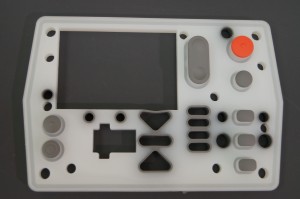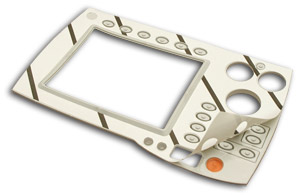When designing a custom silicone rubber keypad, there are a lot of options to consider. While most options will stand out as obvious ones, such as “What durometer to use?” or “Is the keypad going to be backlit or not?” there are a few options that might get overlooked during the design stages that could be beneficial and help with cost savings. A few of these options are tool inserts, silicone adhesives, and insert molding. At Si-Tech, we take pride in our experience in the silicone rubber keypad and component industry, and are happy to give tips for making a design become as successful and cost effective as possible.
Tool Inserts

Silicone Adhesives
Another design tool that can be easy to overlook for custom silicone rubber keypads is a silicone adhesive. When designing a keypad, you may struggle to decide how to attach the keypad to your unit. There are more options than just putting a bezel overtop of the keypad. One easy solution is using a silicone adhesive to attach the rubber keypad to the completed unit. You might be thinking that a silicone adhesive will not give you a strong enough bond as required. This is why, at Si-Tech, we have developed a coating to help aid the bonding. We call it Si Prime ™. Si Prime™is a coating system used in the membrane switch industry that is specifically designed for bonding silicone rubber to a variety of different surfaces with common acrylic adhesives. SiPrime™ offers a unique solution to the intrinsic problem of bonding rubber to polyester switches for far less cost than mechanical means. This coating serves as a bonding barrier between the silicone surface and an acrylic adhesive. When used in conjunction with any 3M™ 350 series Hi holding acrylic adhesive, Si Prime™ offers a high-bond strength for elastomer keypad applications. Under independent lab tests using ASTM standard D-3330, Si Prime™outperformed by more than two times the bonding capabilities of other silicone-acrylic adhesives.
Insert Molding

Si-Tech is a domestic custom silicone rubber keypad and component manufacturer with vast experience in the industry. We are fully ITAR registered and ISO compliant. Contact us today for any of your silicone rubber needs at 757-887-8488 or CS@SiTech-Corp.com.








